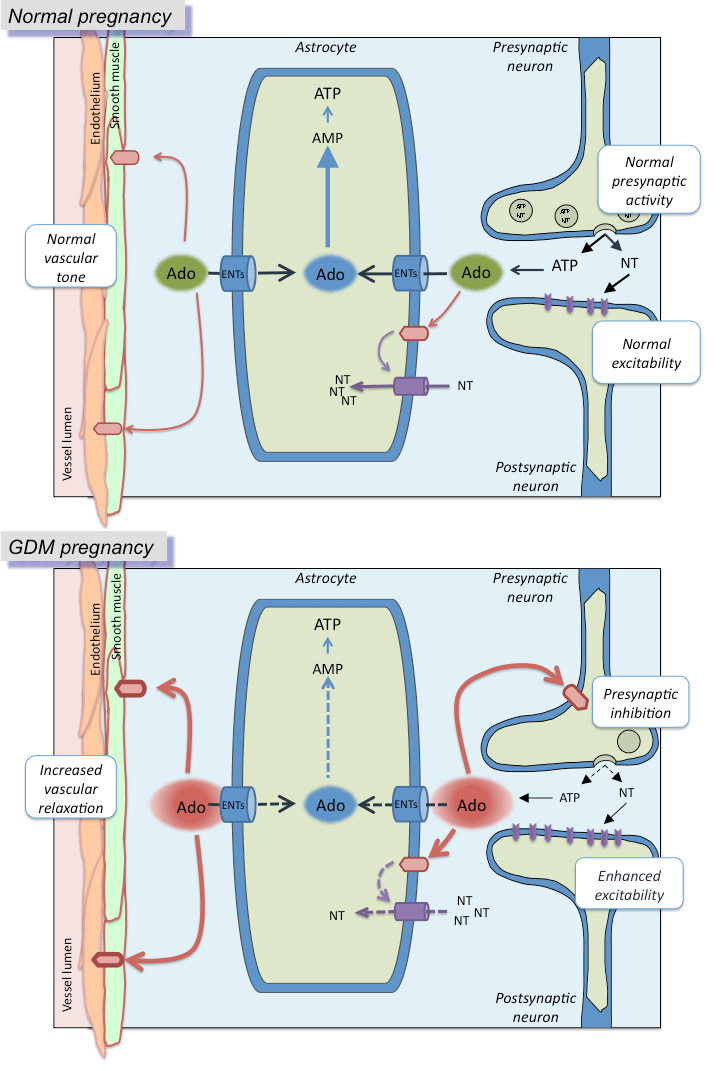
 |
| Figure 5: Proposed metabolic link between vascular cells, astrocytes and neurons in gestational diabetes mellitus (A) In normal pregnancies the astrocyte take up adenosine (Ado) from the extracellular space by human equilibrative nucleoside transporters (ENTs). Adenosine is then metabolized into AMP and ATP in the astrocyte. As a consequence, extracellular levels of adenosine are maintained in a physiological level. Uptake of neurotransmitters (NT) is maintained by activation of adenosine receptors (pink boxes) at the plasma membrane of the astrocytes thus allowing a normal excitability at the postsynaptic neurons resulting from a normal presynaptic activity by the release of NT and ATP. ATP is also converted into adenosine in this space contributing to increase the extracellular levels of this nucleoside in the brain. Adenosine also acts on adenosine receptors at the brain vasculature in both the smooth muscle and endothelial cells to keep a normal vascular tone. (B) In gestational diabetes mellitus (GDM) pregnancies a reduced ENTs transport activity (dotted black arrows) and intracellular metabolism (dotted light blue arrow) in the astrocyte is proposed, thus leading to extracellular accumulation of adenosine. Accumulated adenosine will increase activation of adenosine receptors in the astrocytes to reduce NT uptake (dotted purple arrows) leading to accumulation of these molecules at the synapsis, therefore enhancing postsynaptic excitability. In addition, increased extracellular adenosine will promotes presynaptic inhibition, perhaps as a selfcontrolled mechanism to reduce synapsis in this syndrome, and will increase vascular relaxation by acting on adenosine receptors in the smooth muscle and endothelium of the brain vessels. |